Do you want to grow palm trees but don’t have a big yard? Potted palms are your answer! I’ve been growing these tropical gems for a long time and love how they transform my outdoor space.
In this guide, I’ll show you:
- Which palms work best in containers
- How to pick the perfect pot
- Where to place them for maximum growth
- Simple watering and feeding tips
- Solutions to common problems
Growing palms in pots isn’t difficult, but there are a few key tips to ensure success. I’ve made all the mistakes, so you don’t have to! From cold-weather care to moving heavy pots, I’ll walk you through everything step by step.
My tested methods have kept my palms healthy for years. By the end of this article, you’ll know exactly how to bring that vacation feeling right to your patio or deck.
Why Pick Palm Trees for Pots?
Palm trees in pots make sense for many reasons:
- They’re adaptable to different spots in your yard
- You can move them if the weather turns bad
- They look amazing as focal points on patios
- They grow more slowly in pots, which is ideal for tight spaces
I love how my potted palms create instant tropical feelings. Even in small spaces, they add height and texture that transform boring areas.
Best Palm Trees That Grow Well in Pots
Not all palms work well in containers. Some of my top picks are here:
Areca Palm

The Areca Palm grows about 6 to 7 feet tall and has soft, arching fronds that give off a tropical feel.
It grows multiple stems, so it looks full and bushy—great for filling up an empty corner. It likes bright, indirect light but can handle some morning sun. The soil should stay moist, but not soggy.
In dry air, spider mites can show up, so I mist it often to help keep pests away. Its yellow stems make it even more eye-catching. Keep it in temperatures above 60°F for healthy growth.
Pygmy Date Palm
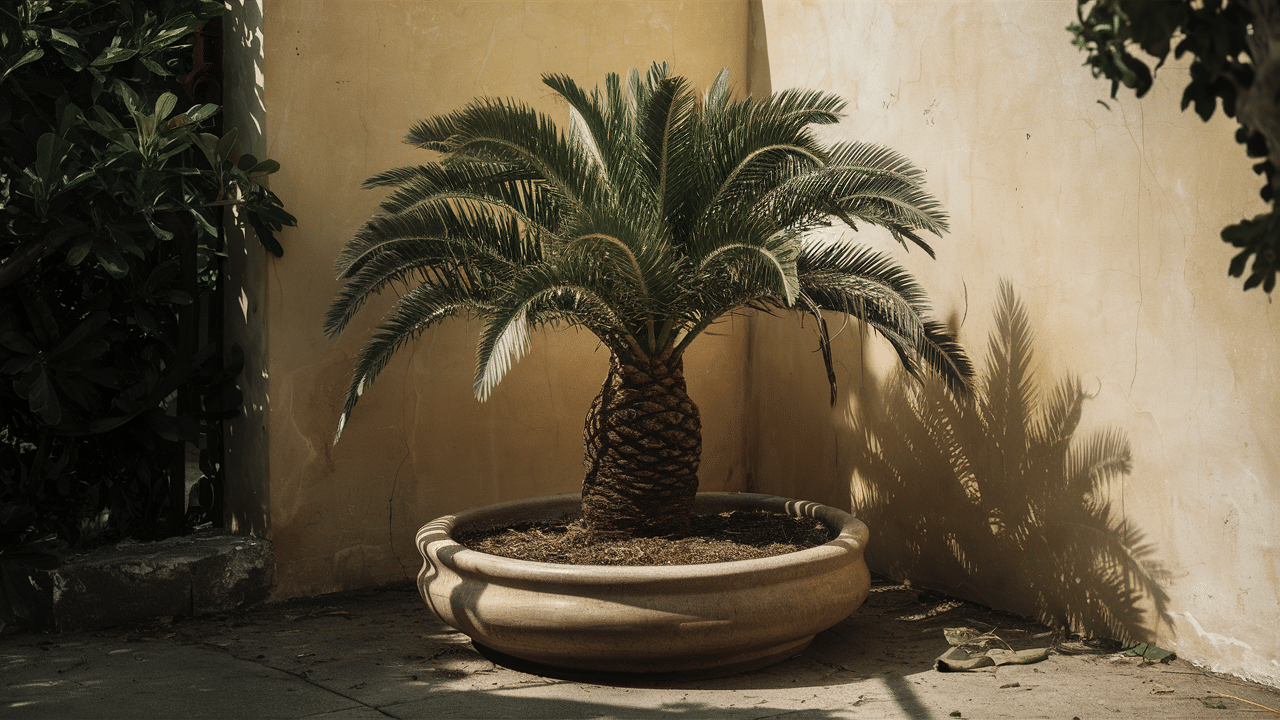
This palm is small and neat, growing about 4 to 6 feet tall in a pot. It has a thick trunk and soft, dark green leaves that form a crown at the top. It may produce tiny ornamental dates and might have sharp spines on the leaf stems.
It grows slowly, which is great for containers. It also does well in partial shade, so it’s perfect for patios that don’t get full sun. With some protection, it can handle temperatures as low as 32°F for a short time.
European Fan Palm

If you live in a cooler area, this is a great pick. It can handle temperatures as low as 15°F with very little protection.
It grows in a round shape with stiff, fan-like leaves that are bluish-green. It grows very slowly—just a few inches each year in a pot. This means you won’t need to repot it often.
It does best in well-drained soil, so I like to add extra perlite to the mix. Once it’s settled, it doesn’t need much water.
Chinese Fan Palm
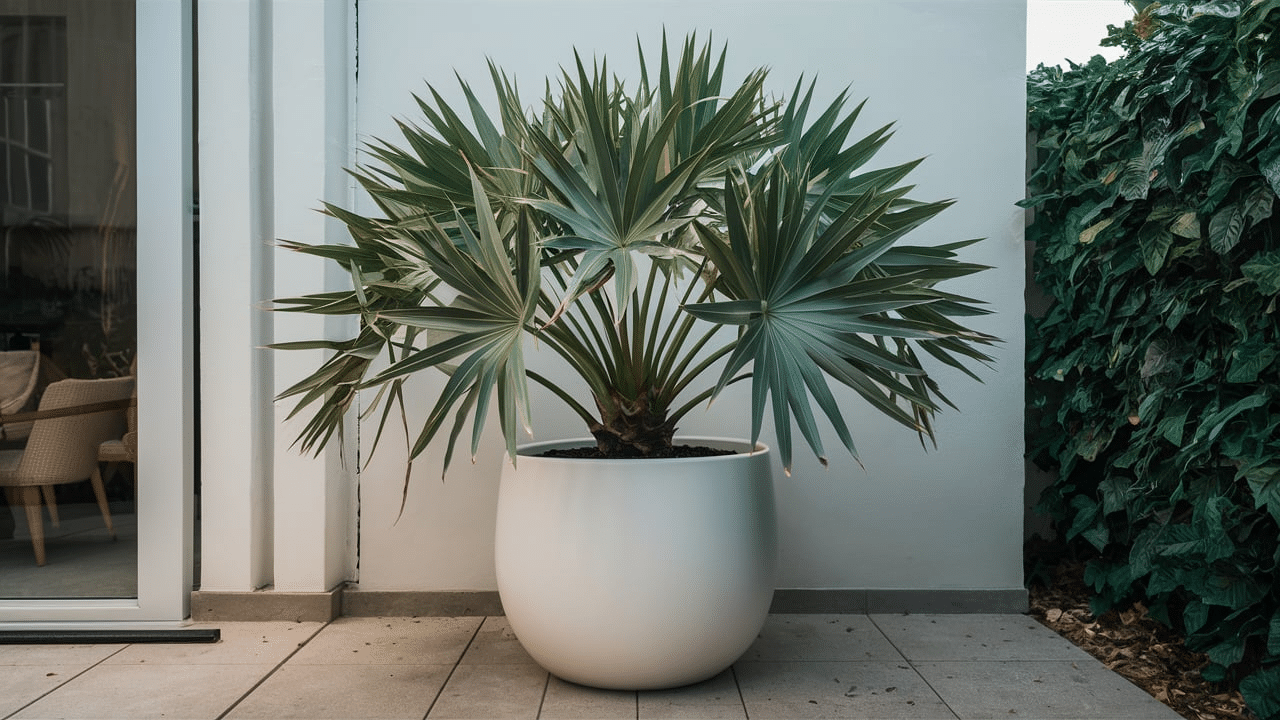
This palm makes a bold statement with its large, star-shaped leaves that can spread 3 to 4 feet wide. The leaves also have thread-like fibers that hang down and add a cool texture.
It grows a single, strong trunk and tends to grow taller than wide. It can handle both sun and shade, but morning sun brings out the best leaf color.
It’s fairly cold-tolerant (down to 25°F) for short periods and becomes drought-resistant once it’s grown a bit. It’s great for placing near patios or entryways.
Sago Palm
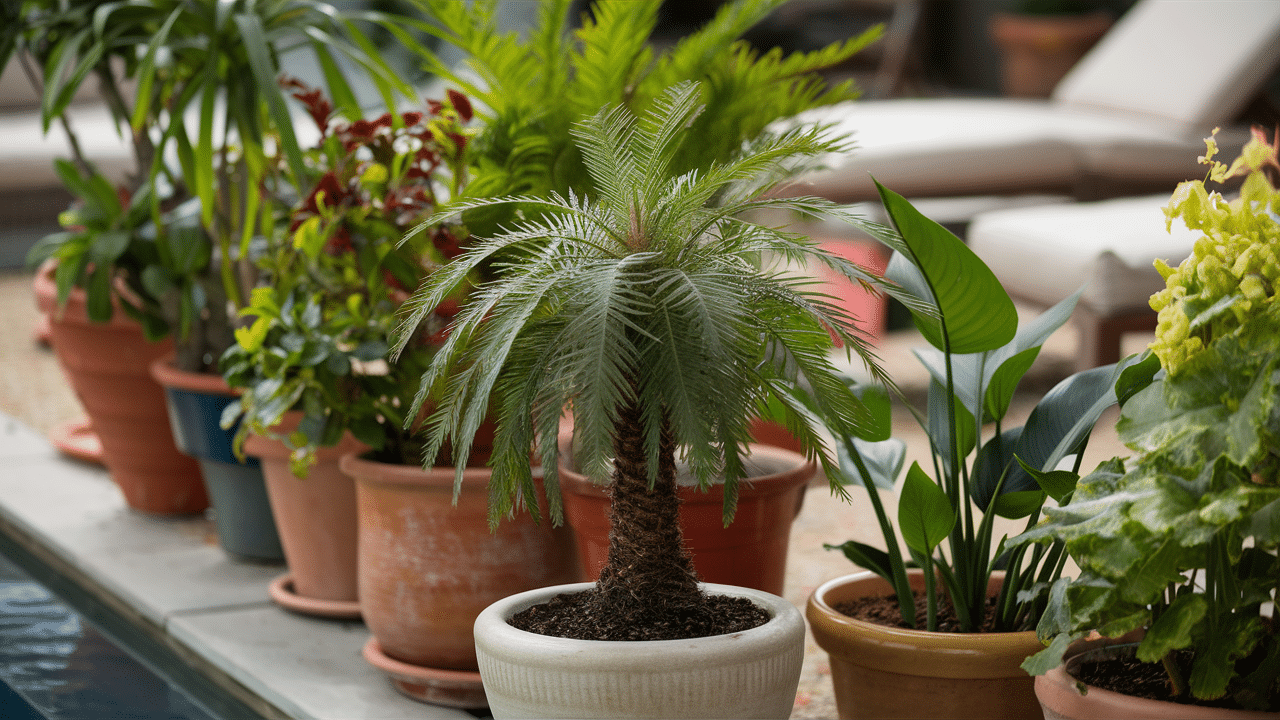
Even though it’s not a true palm, the Sago Palm looks a lot like one. It’s actually a type of cycad and grows very slowly. It only adds one or two new sets of leaves each year, so it stays the same size for a long time—perfect for pots.
With the right care, it can live for decades in the same container. Its leaves are shiny and dark green, and they look good all year. It doesn’t need much water once it’s settled, but it must have good drainage.
Just be aware that all parts of this plant are toxic to pets and kids.
Bottle Palm
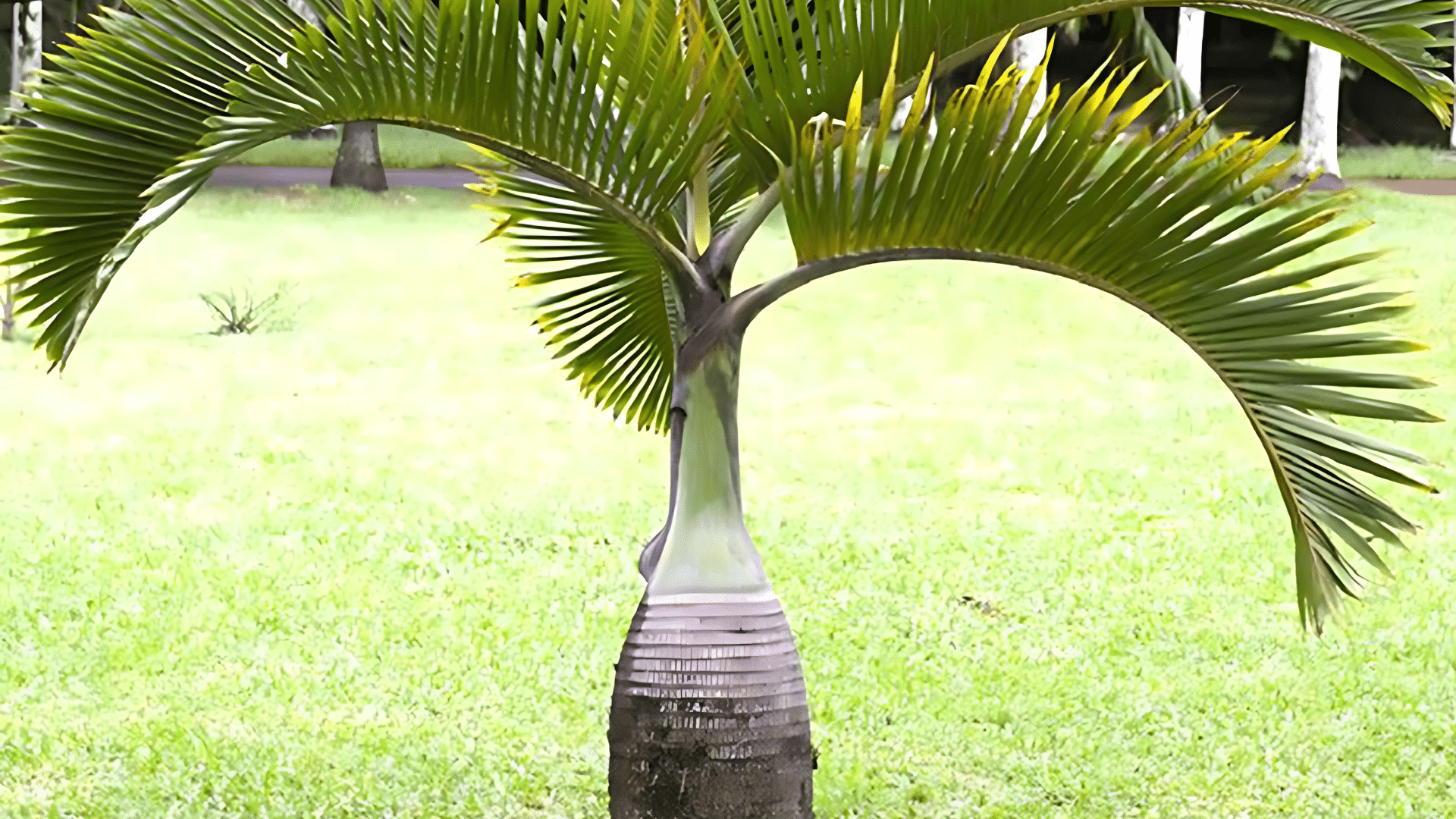
This palm stands out because of its thick, bottle-shaped trunk that stores water. The base is wide and narrows at the top where the fronds grow.
It’s a great choice if you forget to water now and then, since it can go without water for longer periods.
It stays small in pots, usually not growing more than 5 to 6 feet tall. Its roots don’t spread much, so it’s happy in containers for years.
It needs full sun to grow well and won’t survive temperatures below 35°F. As it ages, the trunk turns a smooth, gray color that looks very pretty.
Picking the Right Pot
The pot matters almost as much as the palm! Here’s what to look for:
- Size: At least 2-3 inches wider than the root ball
- Depth: Deep enough for roots (at least 16 inches)
- Material: Clay/terracotta for stability, plastic for lighter weight
- Drainage: Must have holes in the bottom
A big mistake is using pots that are too small. Your palm will need a bigger home every few years.
Bold tip: Dark pots absorb heat, which palms love, but dry out faster, too.
Setting Up Your Potted Palm for Success
Setting up your palm properly is crucial for long-term success. Start by pre-soaking the root ball in water for about 30 minutes to ensure it’s fully hydrated.
While it soaks, prepare a custom mix using 60% quality potting soil, 30% perlite, and 10% worm castings – this combination provides both drainage and nutrients.
When planting, position the palm so that the top of the root ball sits 1-2 inches below the rim of the pot, leaving space for watering.
After placing the palm, fill in around the roots and water thoroughly until moisture runs from the drainage holes. One critical mistake to avoid is planting too deep – the trunk base should remain at its original soil level.
For the first week, keep your newly potted palm in semi-shade to help it adjust gradually to its new home.
Where to Put Your Potted Palm Outdoors
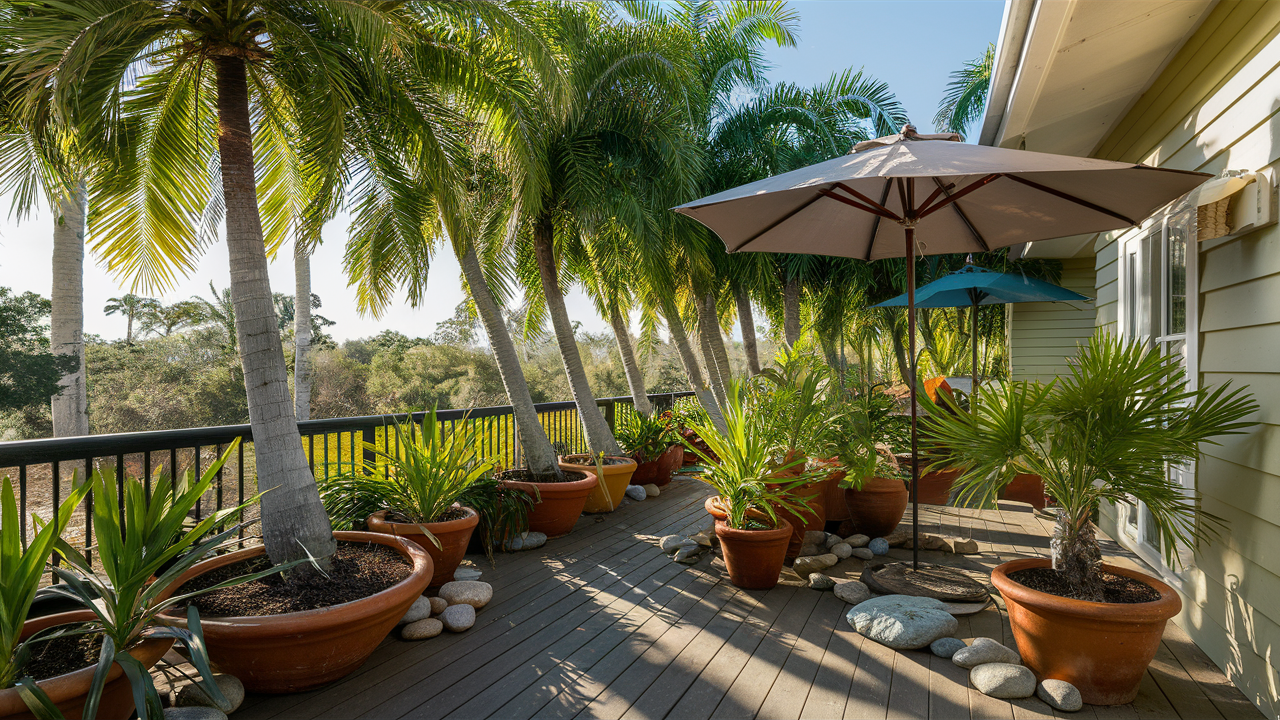
Location can make or break your palm’s success:
- Morning sun but afternoon shade in hot areas
- Protected from strong winds that can damage fronds
- Patios or decks where the pot won’t freeze in winter
- Near water features for extra humidity
Move palms around with the seasons. In summer, they enjoy more sun. In winter, pull them closer to the house for warmth.
Remember: Most palms burn in full, hot sun when in pots, since the roots get hotter than in-ground palms.
How to Water Palm Trees in Pots
Watering is tricky! Too little and they dry out; too much and they rot.
| Watering Aspect | Recommendation |
|---|---|
| When to water | When top 2 inches of soil feel dry |
| Summer frequency | Every 2-3 days, typically |
| Winter frequency | Once a week or less |
| Water temperature | Room temperature, never cold |
| Signs of thirst | Slight drooping of fronds, pot feels lighter |
| Watering method | Deep soak until water runs from drainage holes |
I check moisture by sticking my finger 2 inches into the soil before watering. When my palms droop slightly, that’s my signal to water right away. The pot should feel lighter when it needs water, too.
Feeding Your Palm
Palms in pots need food since they can’t spread roots to find nutrients:
- Slow-release palm fertilizer every 3-4 months during the growing season
- Occasional liquid seaweed for micronutrients
- Extra magnesium (Epsom salts) if leaves turn yellow between the veins
Please don’t overdo it! Half the recommended dose on the package works better for potted palms.
Trimming and Keeping It Clean
Less is more when it comes to palm pruning.
Only remove brown, dead fronds; never cut green ones, as they’re producing food for the palm.
Use clean, sharp tools when trimming. Keep palms looking their best by wiping leaves with a damp cloth to remove dust.
Many new owners over-prune, which stresses the plant and slows its growth. Each green frond feeds the palm, so be conservative with trimming.
Moving Your Palm Tree Pot Around
Moving big pots can be tough on your back and potentially harmful to your plants if done incorrectly.
To make the job easier, try using a plant dolly under particularly heavy containers – these wheeled platforms allow you to roll rather than lift.
For pots without dollies, sliding a piece of cardboard underneath creates a makeshift sled that reduces friction against the ground. Don’t hesitate to ask for help with any container weighing over 50 pounds, as the strain can cause injury.
Whatever method you choose, never drag a palm by its trunk – this damages the plant’s structure and can kill it.
I recommend rearranging your palms with the changing seasons, moving them to sunnier spots during winter months when light is limited, and relocating them to shadier areas during intense summer heat.
Big Problems You Can Run Into (And Fixes!)
Common issues with quick solutions:
- Yellow Leaves: Too much water or not enough nutrients. Check drainage and fertilize.
- Brown Leaf Tips: Caused by dry air or salt buildup. Mist leaves and flush the soil occasionally.
- Slow Growth: Pot too small. Repot in spring to a slightly larger container.
- Pests: Spider mites and scale insects. Treat with neem oil.
- Root Rot: From overwatering. Let the soil dry between waterings.
Can You Grow Them in Cold Weather?
Yes, with proper care. Know your palm’s cold tolerance – European Fan Palms can withstand temperatures as low as 15°F, while Areca Palms die below 40°F. When temperatures drop, move cold-sensitive palms indoors or to protected areas.
For outdoor palms, wrap pots with bubble wrap and cover plants with frost cloth during freezes. Reduce watering in winter.
Hardy varieties, such as European Fan and Windmill Palms, can be left outside with protection, while tropical types require bringing them inside.
Tips for Long-Term Palm Tree Care
Want your potted palms to last for years? Here are the essentials:
- Repot Every 2-3 Years: Choose pots just 2-3 inches larger than the previous one. Spring is the best time for repotting.
- Refresh Soil Annually: Replace the top 2-3 inches with fresh palm mix each spring to add nutrients without disturbing roots.
- Check Drainage Regularly: Clear clogged holes with a wire. Make sure water doesn’t pool under pots.
- Use Quality Soil: Standard potting soil is too heavy. Use a cactus or palm mix, or add perlite and sand to regular potting soil.
- Monitor Root Growth: When roots emerge from multiple drainage holes, it’s time to consider a larger pot.
Conclusion
Growing palm trees in pots has transformed my outdoor space with minimal effort. I love waking up to their tropical feel on my patio. The secret is choosing the right palm variety for your conditions and container.
Begin with good drainage, the right soil mix, and a pot that allows for sufficient growth. Pay attention to watering needs—they’ll tell you when they’re thirsty by slightly drooping.
I’ve found that even in colder areas, some palms thrive with basic protection. The mobility of potted palms allows you to adjust their location as the seasons change.
Don’t be afraid to try! These plants are more forgiving than you might think. Begin with one palm using these tips, and soon you’ll be creating your paradise outdoors.


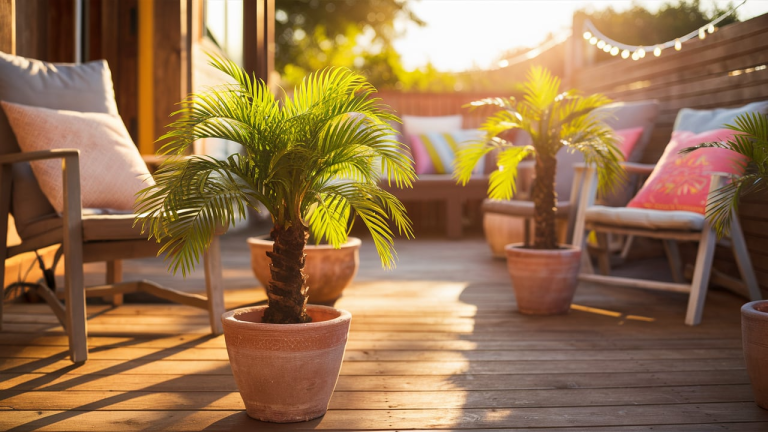

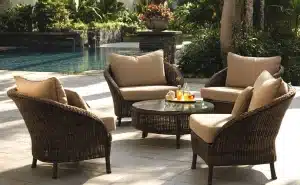
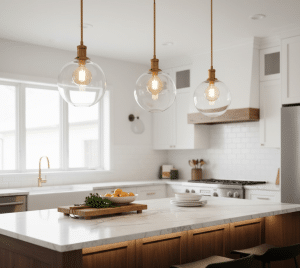




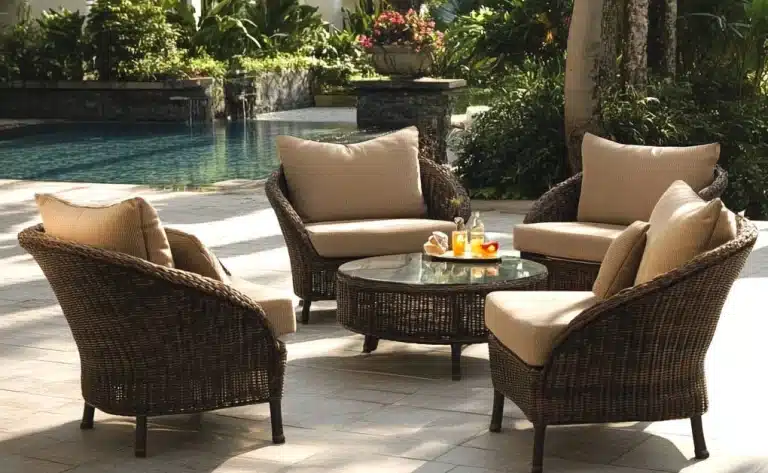
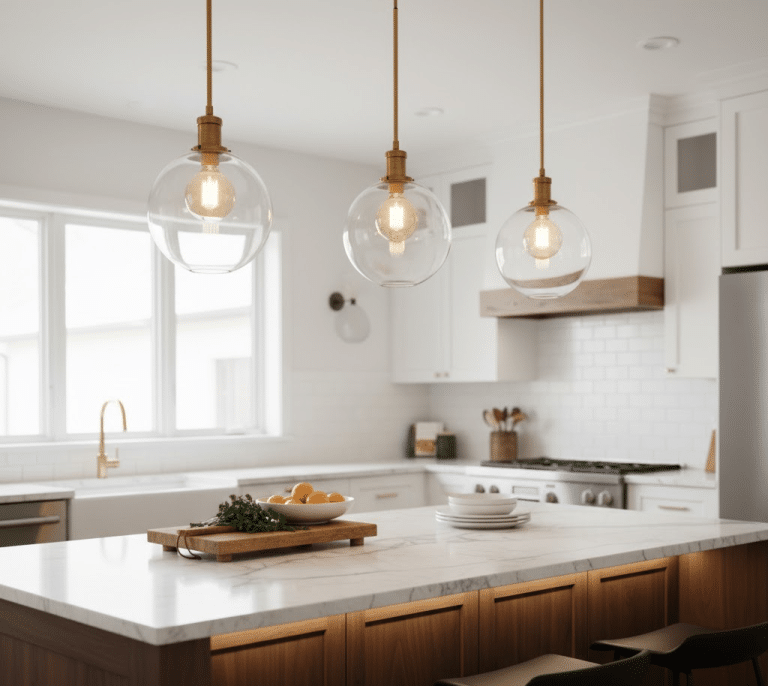
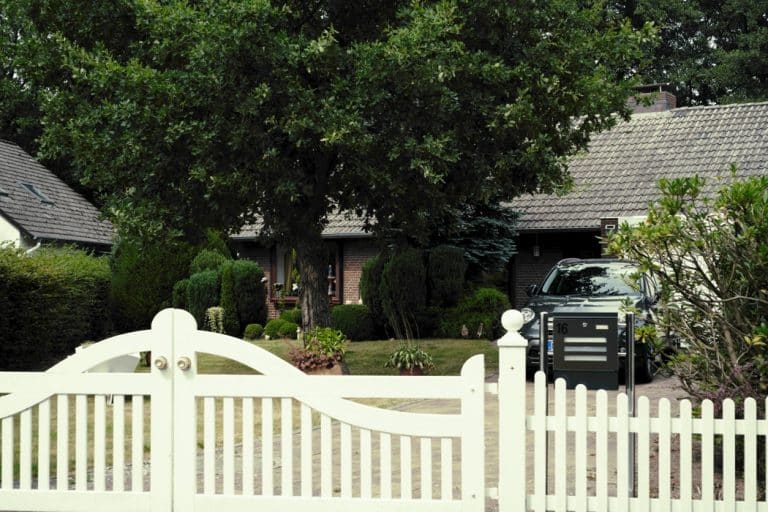
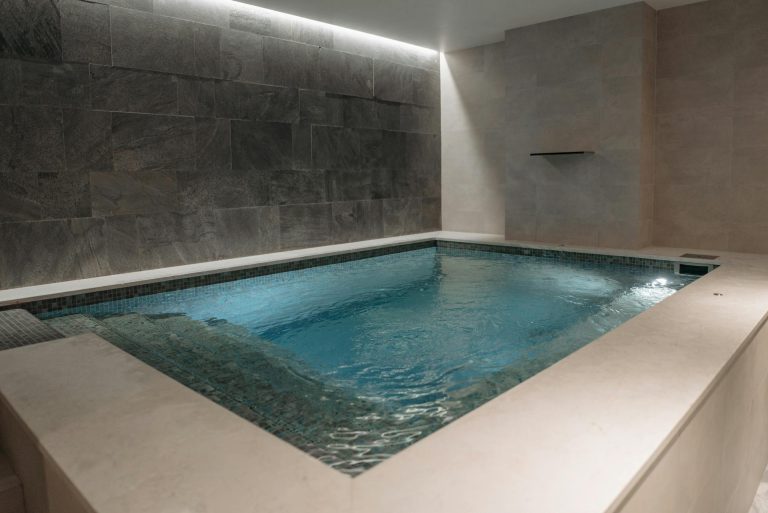
One Response
Hello. We have a palm tree on our balcony that was planted in a big plastic terra cotta pot. We used regular miracle grow vegetable and plant mix potting soil mix and watered it 3 – 4 times a week. It started off well with lots of green leaves. However the last week or so some of the leaves are dropping down and turning brown. They were properly cut off. The green leaves on the palm tree have burnt yellowish brown tips. We continue to water the palm but the same thing keeps happening. We love the palm tree but don’t want it to die. What are we doing wrong? Can it be saved and thrive outdoors on our balcony?
Thank you for help.